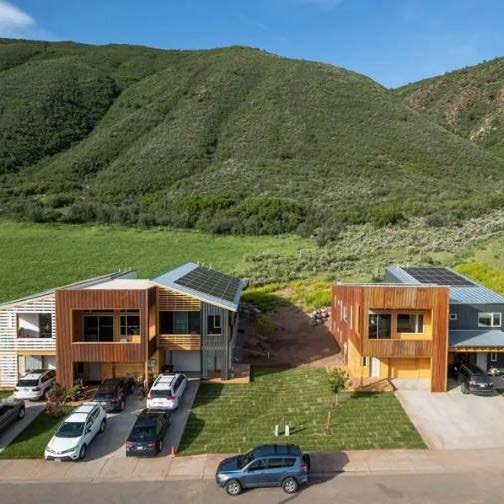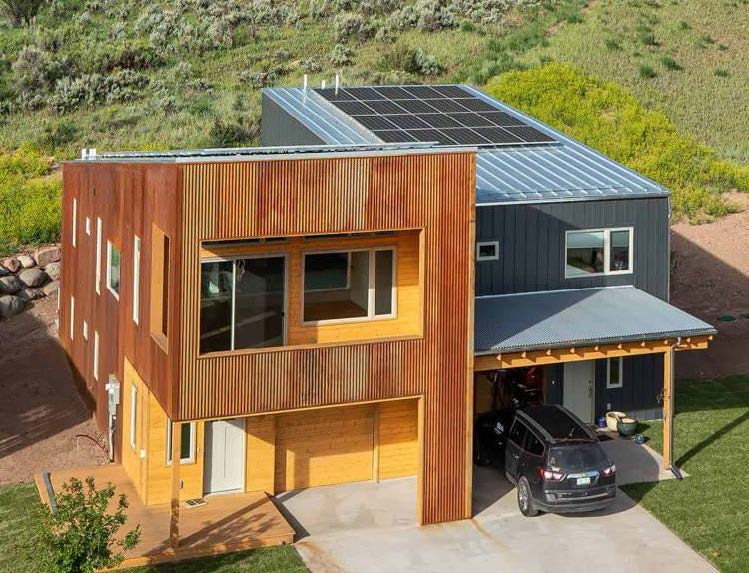Resource Conservation - Case Briefings
Resource Conservation Strategy #1 | Water Conservation
The intent of this strategy is for communities to review and consider options for water conservation through landscape design and requirements that can directly impact overall housing costs for residents. Reducing a household’s water needs can help make home maintenance and reinvestment more affordable. Approaches include the use of water-efficient appliances and fixtures inside the home, as well as water-conscious landscaping outside. Water-wise landscaping codes are intended to eliminate excessive turf lawn requirements and encourage native vegetation in communities.
To get started, communities should review their landscape code to identify standards that limit conservation-friendly approaches, such as turf lawn requirements. Recent innovative developments have shown that water-wise landscaping works well with Colorado’s diverse environments from the Eastern Plains to the Front Range, into the mountains, and the Western Slope. As an added benefit, native plants also provide food and habitat for pollinators. Communities may also require that new construction and major renovations use water efficient appliances and fixtures. Communities that allow these adjustments are noticing neighborhoods and homes that have substantial water use reductions, which in turn impacts overall housing costs.
Community Example
Water Wise Landscape Code, Grand Junction, Colorado
For this case study, Grand Junction added the Water Wise Landscape Code to their overall zoning and development code provisions. The new water-wise landscape criteria sought to provide a variety of elements within the site plan requirements relating to landscaping, such as limitations on turf grass and requirements that 90% of shrubs be xeric and low water species. Additionally, the code adds definitions on “functional turf” with minimum size and ability to be used for common recreational purposes which adds purpose to irrigated turf areas within the community and development sites.
Source: City of Grand Junction and Zoning and Development Code of Grand Junction
Resource Conservation Strategy #3 | Energy Efficient Code
The purpose of this strategy is to provide guidance for communities to encourage the development of energy efficient homes and retrofits that lower household energy costs. Approaches may include high efficiency appliances and HVAC systems, solar panels, insulation and construction materials, and overall home design such as passive solar.
To get started, communities should review the standards in HB 22-1362, which identify strategies to build more energy efficient housing units. Local building codes guide what builders will do in your community and if the language does not promote—or even discourages—energy efficient construction practices, inefficient practices are likely to continue resulting in high utility costs and impacts to housing affordability. Communities can consider other incentives to energy efficient and sustainable building practices, such as XX. Key benefits of implementation include reduced monthly utility costs and lower community infrastructure costs.
Community Example
Habitat for Humanity Roaring Fork Valley, Basalt, Colorado
Basalt and the local Habitat for Humanity organization sought to develop net zero housing through sustainable and renewable development practices. The neighborhood was constructed on land adjacent to the high school with deed-restricted to 3 percent annual appreciation on the purchase price to ensure affordability for the next family while still allowing some equity/appreciation for the initial owner.
percent annual appreciation on the purchase price to ensure affordability for the next family while still allowing some equity/appreciation for the initial owner.
Housing units were developed with efficiency in mind and generate more electricity than they use with creative and energy efficient building products and the use of rooftop solar panels. 27 families were able to move into these affordable housing units, priced as low as $270,000, which serves the area’s teachers and other essential workforce families.
This is a great example of a community and local organization coming together to build innovative affordable and attainable housing for local families.